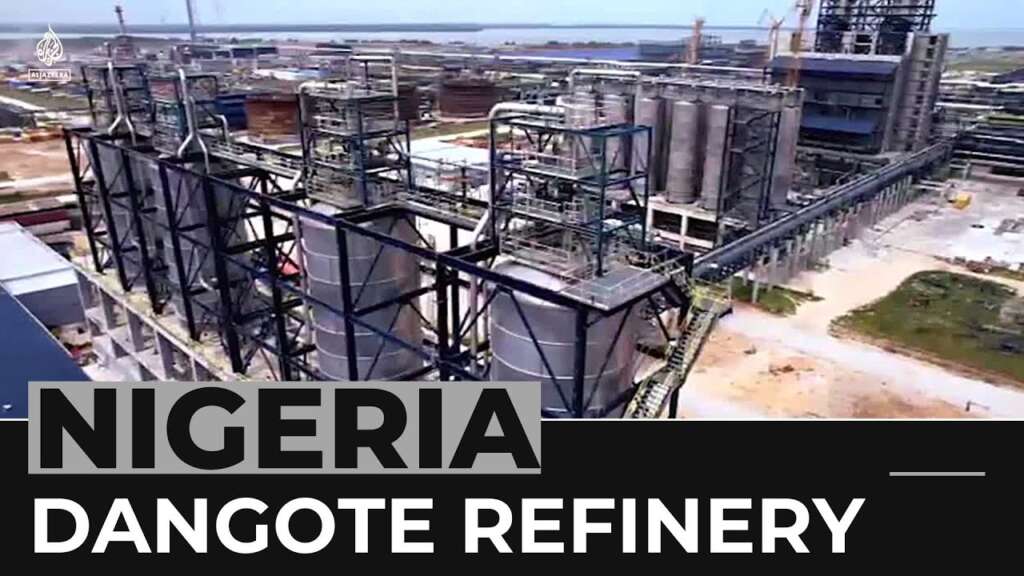
Aliko Dangote $20B Battle: The Challenges Behind Building Africa’s Largest Oil Refinery
Building a multibillion-dollar oil refinery is no small feat, even for Africa’s richest man. Aliko Dangote, the president of Dangote Group, recently revealed the immense struggles he endured in bringing his $20 billion refinery to life in Lagos, Nigeria. In an exclusive interview with The Wall Street Journal, Dangote described the journey as one that put him “through hell.”
Despite these hardships, the Dangote Refinery, Africa’s largest single-train refinery, has finally begun production—marking a historic shift in Nigeria’s oil sector. But what did it take to make this project a reality? Let’s break down the key challenges, the refinery’s impact, and what the future holds.
The Vision Behind the Refinery
For decades, Nigeria, Africa’s largest oil producer, has paradoxically struggled with refining its own crude oil. The country has relied on expensive imports of refined petroleum products, leading to economic instability and frequent fuel shortages.
Dangote envisioned a world-class refinery that would not only make Nigeria self-sufficient in refined petroleum products but also position the country as a net exporter of fuel. The project, situated in Lagos’ Lekki Free Zone, boasts a refining capacity of 650,000 barrels per day—making it one of the largest oil refineries in the world.
The Challenges: “I Went Through Hell”
SEE ALSO: Dangote Refinery Faces Challenges as it Aims for Full Capacity
1. Massive Logistical Nightmares
One of the biggest hurdles Dangote faced was the logistics of bringing in equipment and raw materials for the refinery. Given the sheer size of the project, massive machinery had to be imported from different parts of the world. Transporting these materials through Nigeria’s existing infrastructure was a monumental challenge.
- Port congestion: Large shipments had to be carefully coordinated to avoid delays.
- Road infrastructure: The heavy-duty equipment required well-built roads, many of which needed upgrades before transportation could even begin.
- Delays due to bureaucracy: Importing materials required clearing multiple regulatory hurdles, adding to project timelines.
2. Funding Struggles
Despite being Africa’s wealthiest businessman, Dangote needed significant external funding to finance the refinery. Raising capital for such a colossal project wasn’t easy.
- Dangote had to secure billions in loans from international and local banks.
- Currency fluctuations and global economic instability added to financial strain.
- Rising costs meant that initial budget estimates kept increasing, leading to further fundraising efforts.
3. Technical and Engineering Complexities
The refinery wasn’t just large—it was the largest single-train refinery in the world. This came with a unique set of technical difficulties.
- Finding the right expertise to design and build the refinery required partnerships with leading global engineering firms.
- Ensuring that the refinery met international standards for safety and efficiency required meticulous planning and execution.
- Training and employing a skilled workforce to operate such a massive facility posed another challenge.

4. Government Competition and Policy Challenges
While Dangote worked to establish the refinery, the Nigerian government was simultaneously spending over $25 billion to refurbish its own refineries, many of which had been dysfunctional for years. This presented a unique challenge.
- The government’s entry into the refining space created competition, raising concerns about market control and pricing.
- Dangote faced accusations of monopolizing the oil refining sector, which he refuted, saying, “I did not stop other refineries from being built. I went through hell to build my own.”
- Regulatory policies sometimes shifted, requiring constant adaptation to new governmental requirements.
The Refinery’s Milestones and Achievements
Despite these enormous challenges, the Dangote Refinery has finally come to life. Key milestones include:
- Production Begins: The refinery started producing diesel and jet fuel in early 2023.
- Gasoline Production: Gasoline production began in September 2023.
- Job Creation: The project has provided thousands of jobs for Nigerians, from construction workers to refinery operators.
- Boost to Nigeria’s Economy: The refinery is expected to reduce Nigeria’s reliance on imported fuel and significantly cut costs for consumers.
The Future of the Dangote Refinery
With production now underway, the refinery is set to reshape Nigeria’s oil sector in several ways:
- Fuel Independence: Nigeria will rely less on imported refined products, reducing the strain on foreign exchange reserves.
- Exports to Other African Countries: The refinery is expected to supply fuel to other nations, strengthening Nigeria’s position in Africa’s energy market.
- Potential Expansion: As the refinery stabilizes, there is potential for expanding capacity and adding new product lines.
Conclusion
Aliko Dangote’s journey to building Africa’s largest oil refinery was anything but smooth. From financial struggles and engineering complexities to government competition and logistical nightmares, he truly “went through hell” to make this dream a reality.
Yet, despite these difficulties, the refinery stands as a testament to resilience, vision, and ambition. As it continues to expand its operations, it is set to redefine Nigeria’s oil industry, creating a more self-sufficient and prosperous future for the nation.
The question now remains: Can this refinery be the game-changer that finally ends Nigeria’s fuel import dependence? Time will tell, but one thing is certain—Aliko Dangote has already cemented his legacy as one of Africa’s most ambitious industrialists.


